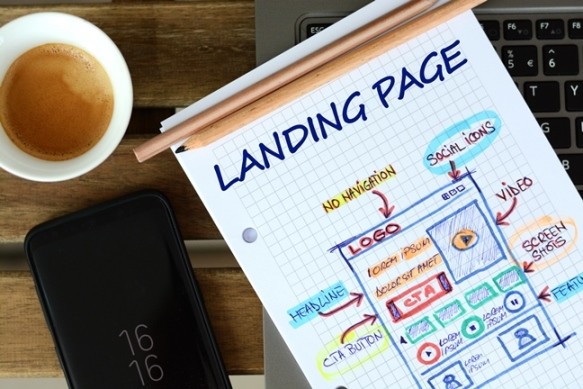As a business owner, sending potential customers to your website can be essential to your success. But what happens when they get to your home page and have no clue where to turn next? You can make adjustments to ensure simple browsing and navigation, but creating landing pages offers a better opportunity to get customers exactly where they want to go.
If you’re wondering: Do I need a landing page? The answer is yes!
Want to learn how to make a landing page? Below, we detail the importance of a landing page, how to use one and how to create one.
Why a Landing Page is Important
A landing page is a site that’s designed to increase conversions by turning page visitors into leads.
Landing pages shouldn’t be confused with other pages on your website, like the home page. A specific feature that every landing page includes is a form that allows visitors to input their contact information in exchange for a piece of content, offer or another digital asset.
Each landing page has its sole purpose (converting users to make a specific action and become a lead). Consider your home page as the warm welcome into your home, but the door to each room is like the landing page that offers a specific opportunity once you enter.
So why is a landing page important? Let’s cover some of the compelling benefits:
- Landing pages build your brand. Your website makes a major impression on people who are interested in inquiring about your products or services. Landing pages add content to your website, which can ultimately help build your brand and help visitors get to know you better.
- They improve your SEO. Landing pages can perform better with targeted keywords, which can improve your ranking and drive traffic directly to your website. They also make it easier to analyze visitor actions so you can make the most of each move made in your marketing strategy.
- They drive traffic to your website. Landing pages should have a custom URL, which can help you enhance domain authority. They should also include long-tail keywords and metadata, as Google can identify this and make your landing pages appear on the search page.
- They generate leads. Your landing page can be a top-performing lead generation tool when executed correctly. Using a form-fill feature, you can collect personal information from visitors and establish points of contact so you can reach out to them at a later date.
- They give you insight into the engaged demographic. When conversions are complete, you’ll gain insight into the type of visitors who are interested in learning more about what you have to offer. This can help you cater to your target audience better and develop a stronger sales pitch when it’s time to reach out.
- They can be dispersed among other marketing channels. Landing pages can be shared just about anywhere. Whether it’s within a blog on your website, on your social media channels or in your email marketing campaign, you can take advantage of linking to your landing page in as many places as you see fit.
Research shows that 1 in 10 people who get to your landing page will end up becoming a successful lead. So why not make the move?
When to Use a Landing Page

Landing pages can be useful for a variety of assets to offer readers in exchange for contact information. Some examples include:
1. eBooks and Whitepapers
If you want to be a thought leader in the industry, focusing on assets that highlight your expertise offers an opportunity to create gated content like an eBook or whitepaper.
2. Newsletter Subscription
Encouraging your target audience to stay up-to-date with your latest content can be made easy with a newsletter subscription offer.
3. Webinar or Event Admission
A landing page to sign up for a webinar or event can grant you access to contact information so you can send them deals and updates leading up to the event.
4. Educational Material or Courses
Invite your readers to sign up for courses or gain access to a piece of educational material to add value to their experience with your business.
5. A Free Trial of Your Products or Services
If you want to offer readers a free demo of one of your products or services, it deserves its own landing page. Once you’ve received the contact information, you can provide access to the free trial and use the information to follow up on the leads since they’ve shown initial interest in what you have to offer.
How to Make a Landing Page
According to Marketing Sherpa, the main reason businesses refrain from using landing pages is because they don’t know how to create and set them up. However, there are dozens of landing page templates available that can streamline the process. If you want to build your landing pages from scratch, make sure to be mindful of the following:
- Understand your main goal. What do you want your landing page to accomplish and how are you going to ensure this happens?
- Curate unique and effective copy. Beyond the asset you are providing in exchange for contact information, make sure the copy that sits directly on the landing page is effective, encouraging and compelling.
- Develop your design. Your design should align with your brand and target audience.
- Generate your CTA. This may be the most important part of the landing page, so be sure to spend ample time creating a CTA that inspires your audience to take action and learn more.
Creating landing pages is a smart move for meeting your goals. Interested in learning about other avenues of business growth, such as affiliate marketing? Read about my Rapid Profit Machine today.





Add comment